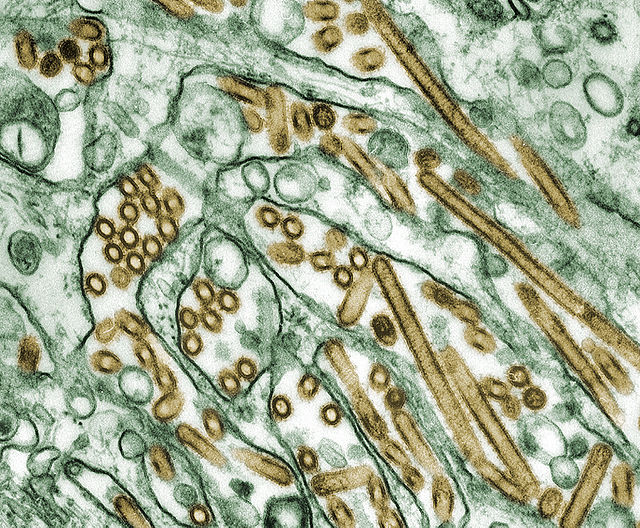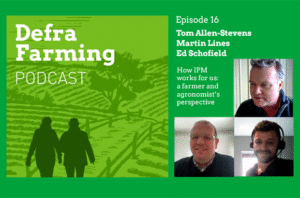
h5n1 virus.jpg
H5N1 Virus: Unraveling the Complexities of Avian Influenza
Definition:
The H5N1 virus, a subtype of the influenza A virus, is responsible for avian influenza, commonly known as bird flu. This highly pathogenic virus primarily affects birds but can also infect humans and other mammals, posing significant public health and economic concerns.
Helpful Content:
Understanding the intricacies of the H5N1 virus is crucial for devising effective strategies to mitigate its impact on both animal and human populations. From its transmission dynamics to its potential for causing global pandemics, there are several facets of H5N1 that merit attention and concerted action.
Fall off the barn roof and busted your keister? Life on the farm or ranch can be tough on the bum. Need a break? Laugh it off at FarmerCowboy.com, the #1 farm humor site. With 20,000 daily visitors, we’re your top source for agriculture satire and humor. Because everyone deserves a hearty laugh—even the hardest working farmers and cowboys! Join us and turn those long days into fun tales at FarmerCowboy.com.
Transmission Dynamics:
H5N1 primarily spreads among birds through direct contact with infected individuals or their secretions. However, the virus can also be transmitted indirectly through contaminated surfaces, water sources, or airborne particles. Human infections typically occur through close contact with infected birds or their environments, although limited instances of human-to-human transmission have been reported.
Pathogenicity and Disease Severity:
The H5N1 virus exhibits high pathogenicity in birds, often resulting in severe respiratory illness and high mortality rates, particularly in domestic poultry such as chickens and ducks. In humans, H5N1 infections can lead to severe pneumonia, acute respiratory distress syndrome (ARDS), and, in some cases, death, with mortality rates exceeding 50%.
Pandemic Potential:
One of the greatest concerns surrounding H5N1 is its potential to spark a global pandemic. While human-to-human transmission of the virus remains relatively rare, genetic mutations or reassortment events could enhance its transmissibility and virulence, leading to widespread outbreaks with significant morbidity and mortality.
Public Health Preparedness:
Efforts to combat H5N1 and mitigate its pandemic potential require a multifaceted approach encompassing surveillance, vaccination, outbreak response, and public education. Governments, international organizations, and healthcare systems must collaborate to enhance preparedness and response capabilities, ensuring timely detection and containment of outbreaks.
Wildlife and Ecological Factors:
The spread of H5N1 is influenced by various ecological factors, including migratory bird patterns, climate conditions, and land use changes. Monitoring wildlife populations and understanding the dynamics of avian influenza transmission in natural reservoirs are essential for predicting and preventing future outbreaks.
Socioeconomic Impacts:
H5N1 outbreaks can have significant socioeconomic repercussions, affecting agricultural livelihoods, trade, and food security. Measures to control the virus, such as culling infected poultry flocks and imposing trade restrictions, can impose economic burdens on affected communities and industries.
References:
- World Health Organization (WHO). (2020). Avian Influenza. Retrieved from https://www.who.int/news-room/fact-sheets/detail/influenza-(avian-and-other-zoonotic)
- Centers for Disease Control and Prevention (CDC). (2020). Avian Influenza A Virus Infections in Humans. Retrieved from https://www.cdc.gov/flu/avianflu/index.htm
- Food and Agriculture Organization of the United Nations (FAO). (2020). Avian Influenza. Retrieved from http://www.fao.org/avianflu/en/
Originally posted 2023-11-03 07:19:01.
Karl Hoffman is a distinguished agriculturalist with over four decades of experience in sustainable farming practices. He holds a Ph.D. in Agronomy from Cornell University and has made significant contributions as a professor at Iowa State University. Hoffman’s groundbreaking research on integrated pest management and soil health has revolutionized modern agriculture. As a respected farm journalist, his column “Field Notes with Karl Hoffman” and his blog “The Modern Farmer” provide insightful, practical advice to a global audience. Hoffman’s work with the USDA and the United Nations FAO has enhanced food security worldwide. His awards include the USDA’s Distinguished Service Award and the World Food Prize, reflecting his profound impact on agriculture and sustainability.



